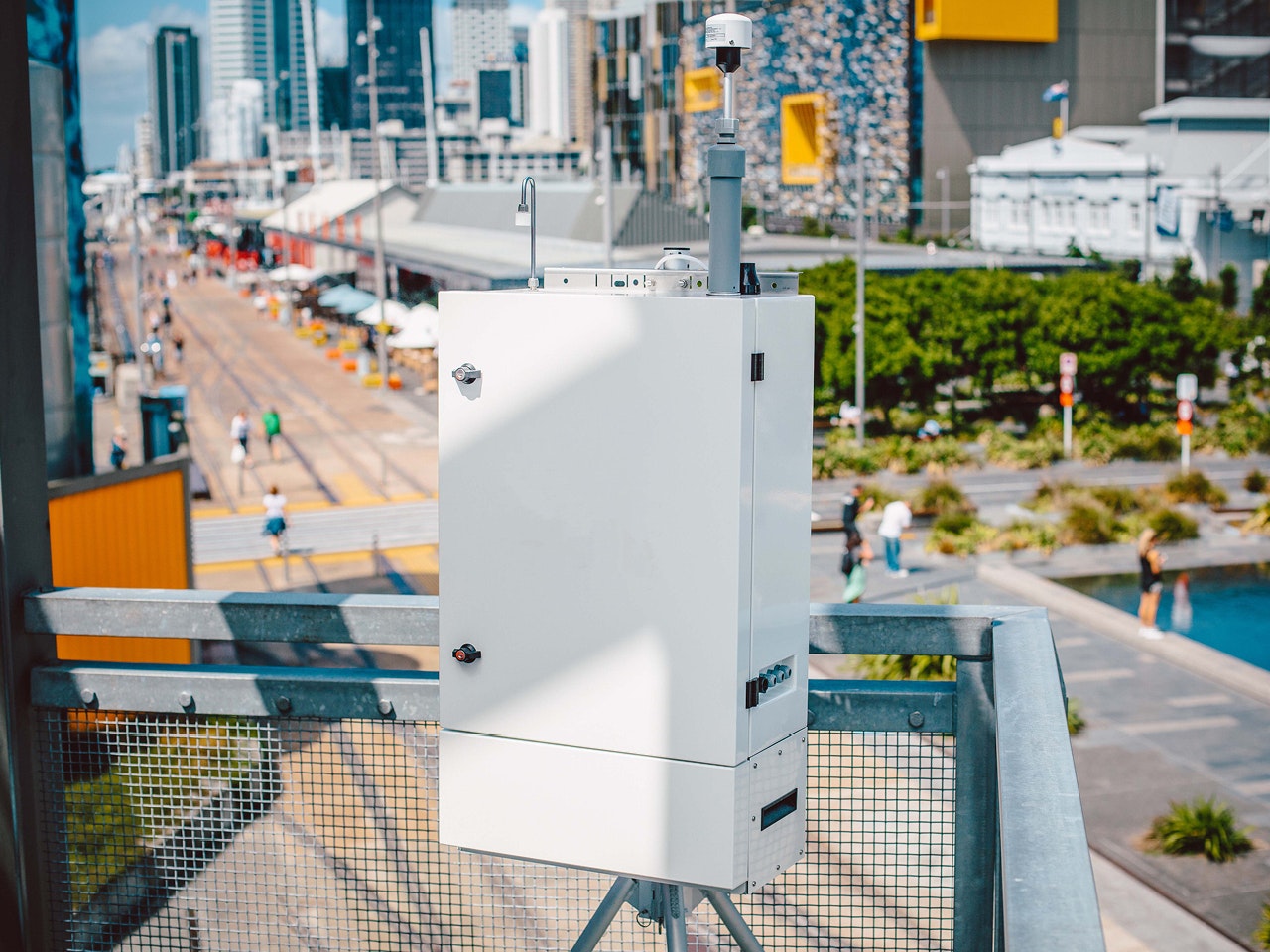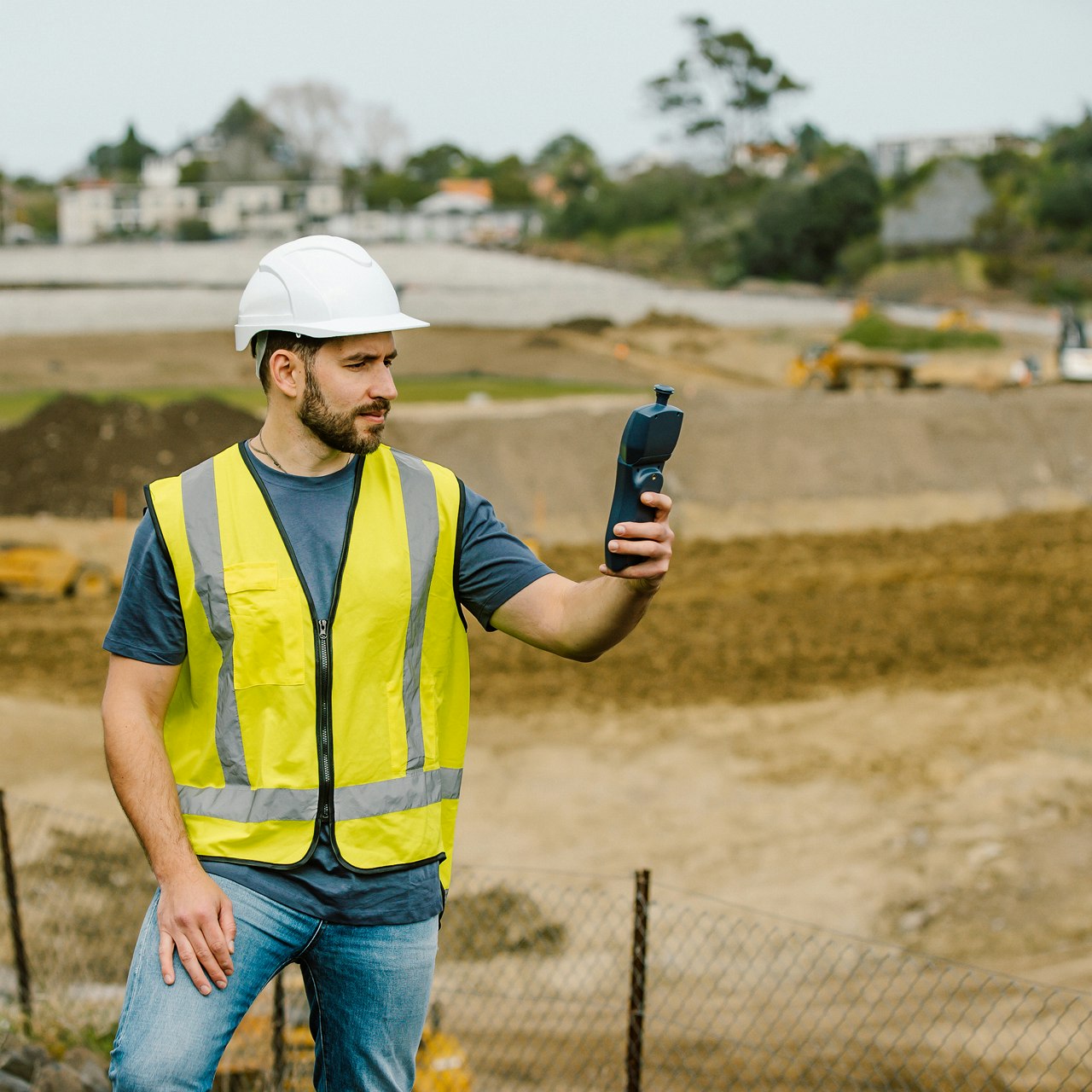Measurements
Carbon Monoxide CO
Aeroqual designs and delivers monitors that measure carbon monoxide (CO). Choose from our perimeter or handheld air monitoring range.
Here we cover CO measurement principles, specifications and performance.
Overview of carbon monoxide
Carbon monoxide (CO) is one of six criteria air pollutants identified by the US EPA and is monitored extensively around the world by regulatory agencies.
Carbon monoxide is a by-product of combustion; it is emitted from industrial processes and from vehicle exhaust.
Perimeter air quality monitors
The CO analyzer module features in our perimeter air quality monitors: AQS 1 Air Quality Monitor and AQM 65 Monitoring Station.
CO module measurement principle
The sensor used in the CO module is an electrochemical sensor. The sensor generates an electrical current in nA which is proportional to the concentration of gas that comes in to contact with the sensor. The sensor current is converted to a voltage and the voltage is measured and used to calculate the CO concentration using a proprietary algorithm approximately once per minute.
The module has a single flow state across the sensor. The flow rate is determined by a flow control orifice on the exhaust side of the sensor and measured at the inlet to the sensor module (expected to be approximately 150 mL min-1).
Module specifications and performance
The CO module performance specifications are given in the table below.
CO Analyzer Module
Range (ppm)
0 - 25
Display Resolution (ppm)
0.001
Noise: Zero (ppm); Span (% of reading)
0.02; 1%
Limit of Detection (ppm)
0.04
Precision
3% of reading or 0.05 ppm
Linearity (% of FS)
1%
24 hr Drift: Zero (ppm); Span (% of FS)
0.14; 2%
Field test results
An Aeroqual AQM 65 containing a CO module was co-located in April 2022 at an air quality regulatory station in Riverside, Southern California and its data compared with the reference data downloaded from the US EPA AirNow website. The CO module produced a R2 of 0.93 and a mean absolute error (MAE) of 0.03 ppm. The low MAE value is indicative that the module has low zero and span drift.
Carbon monoxide module time series plot
Carbon monoxide module scatter plot of data with linear regression and coefficient of determination
Demonstration of equivalence
The total measurement uncertainty, based on the EU Guide to Demonstration of Equivalence, using an hourly limit value of 9 ppm, was calculated as 7.1%. Note that an expanded relative uncertainty of less than 15% is required for a CO monitor to be considered regulatory grade. The CO module meets this requirement.
Directive 2008/50/EC downloaded 10/02/2023 here.
Module calibration and traceability
Just like a regulatory CO analyzer using NDIR gas filter correlation, the CO module can be field calibrated using standard calibration equipment and reference gases. This ensures the module calibration is fully traceable to NIST primary standards.
The CO module factory calibration is achieved using a zero-air source, certified calibration gas standards and a certified gas dilution calibrator. The Aeroqual AirCal 1000 or 8000 systems can be used to calibrate the CO module in the field.
Calibration frequency will be dependent on the user’s data quality objectives and Quality Assurance Project Plan (QAPP), but based on the low rate of field drift the recommended calibration frequency is 1-3 months.
Aeroqual also offers its patented remote calibration procedure MOMA for this module which avoids the need for a site visit while also maintaining traceability to nearby regulatory air monitoring stations. See your Aeroqual representative for more information on this software tool.
Interferences
The Aeroqual CO module is specific towards CO but other gases in the environment may also cause a response from the CO sensor. These do not indicate a fault. These effects are part of the module behavior and should be considered when examining data.
The CO module response to other ambient air pollutants is documented in the table below.
Pollutant
Test Concentration (ppm)
Typical Module Response (ppm)
O3
0.1
No response
NO2
0.1
No response
SO2
0.1
No response
H2S
0.1
No response
Ethylene
0.5
<0.1
CO module expected lifetime
The GSE sensor has an expected life of 2 years in climates with moderate humidity. In climates with very high humidity the expected life may be reduced.
Handheld air monitors and fixed indoor monitors
The CO sensor head features in our handheld air quality monitors: Ranger and S Series, and indoor fixed monitor range Series 900.
CO Sensor head measurement principle
Aeroqual offers two different sensor types for CO measurement in our sensor head range: the gas sensitive semiconductor (GSS) sensor and the gas sensitive electrochemical (GSE) sensor.
The GSE sensor head incorporates an electrochemical gas sensor. This sensor generates an electrical current in nA, which is proportional to the concentration of CO that comes in contact with the sensor. The sensor current is converted to a voltage and this voltage is used to calculate CO concentration.
The GSS sensor head incorporates a semiconducting gas sensor, which is manufactured by Aeroqual. The sensing layer is a p-type semiconductor whose resistance increases when CO gas is present. The change in sensor resistance is used to calculate CO concentrations.
CO Sensor head specifications
The table below contains the carbon monoxide sensor head specifications. These can be used on our Ranger, S Series and Series 900 products. The 0-25 ppm sensor is designed for outdoor environmental monitoring. The 0-1000 ppm sensor is designed for industrial health and safety air monitoring. The 0-100 ppm sensor is designed for both plus indoor air quality.
Sensor Code
ECM
ECN
CO
Sensor Type
GSE
GSE
GSS
Range (ppm)
0-25
0-100
0-1000
Detection Limit (ppm)
0.05
0.2
1
Accuracy of Factory Calibration
<±0.5 ppm 0-5 ppm
<±10% 5-25 ppm
<±1 ppm 0-10 ppm
<±10% 10-100 ppm
<±2 ppm + 15%
Display Resolution (ppm)
0.01
0.1
1
Response Time (seconds)
60
30
30
CO GSE sensor head cross sensitivities
Although the GSE sensor in the CO sensor head is designed to measure CO, it does show cross-interferences to other gases. The table below shows the response in ppm of the CO GSE sensor heads to different gases.
Gas
Carbon monoxide (CO) (SH ECM, SH ECN)
O3 1 ppm
-
CO 25 ppm
-
NO2 1 ppm
<-0.01
SO2 1 ppm
<0.001
H2S 1 ppm
-
Ethylene 5 ppm
<0.25
CO2 400 ppm
-
H2 1 ppm
<0.04
NO 5 ppm
<-0.1
Products that measure carbon monoxide
The following products measure carbon monoxide, as well as particulate matter and gaseous pollutants in real-time.
Articles
Case Study - Urban Air Monitoring
Dubai Trusts Aeroqual with its Air Quality Monitoring Network
Blog - Outdoor
Aeroqual and ASTM Establish Global Standard for Evaluating Outdoor Sensor Performance
Blog - Remediation
Producing Defensible Data: The Importance of Keeping Calibration Certificates Up to Date
Inquire about our carbon monoxide products
Our CO advanced monitoring systems deliver hyper-local data and real-time alerts, giving you actionable data to make the decisions that matter.












